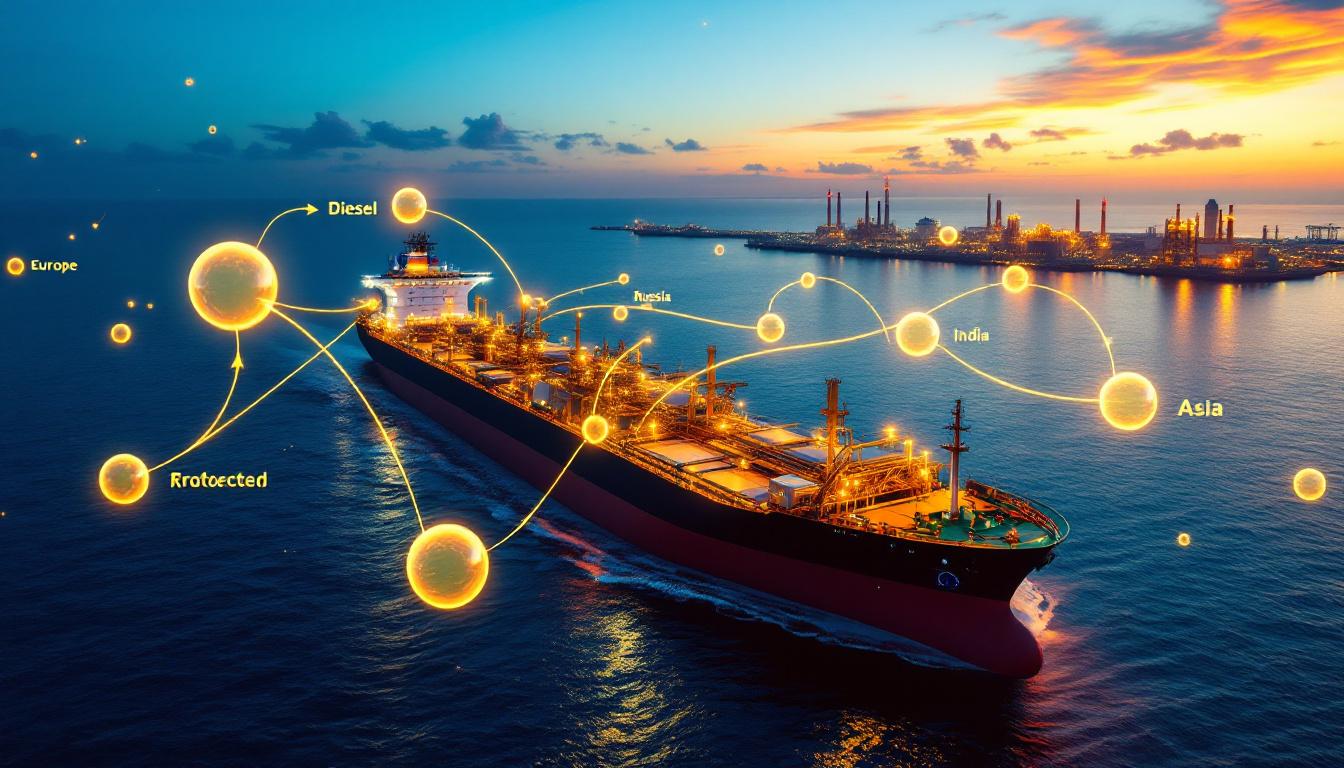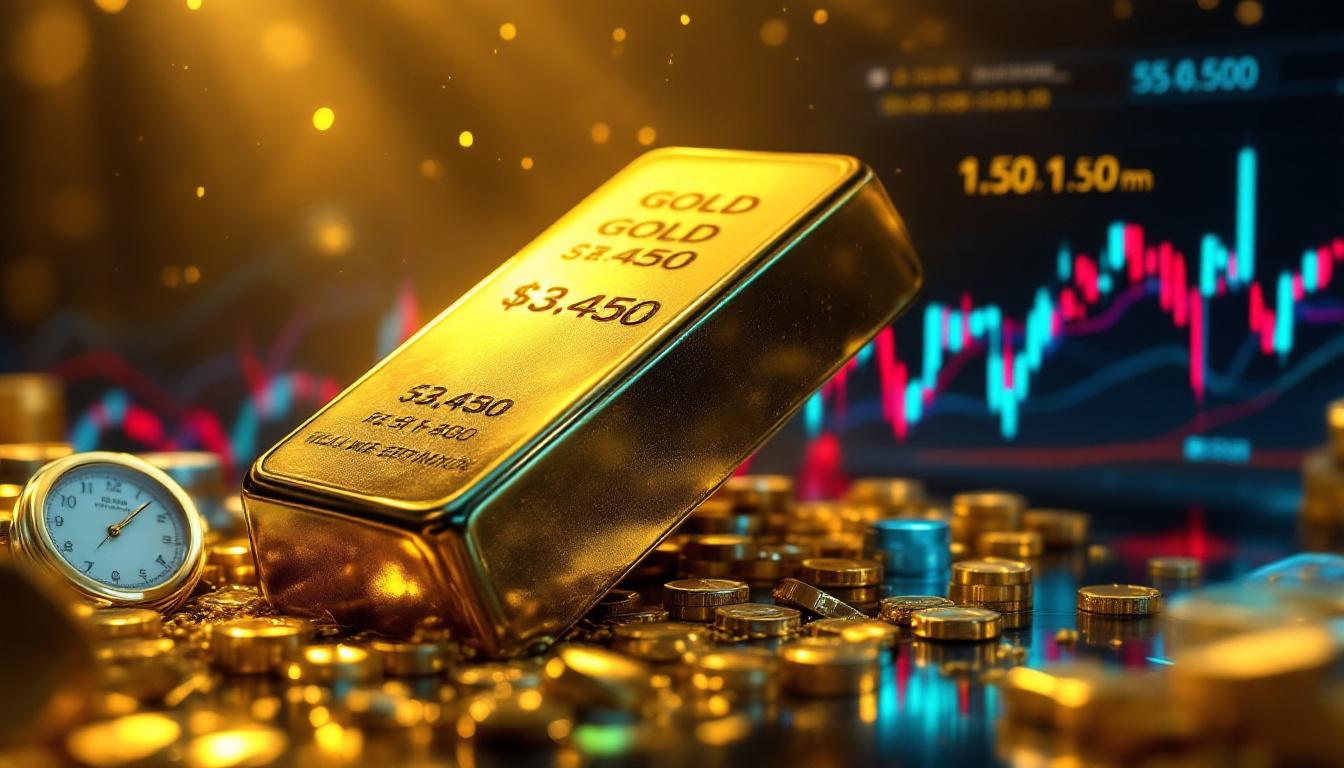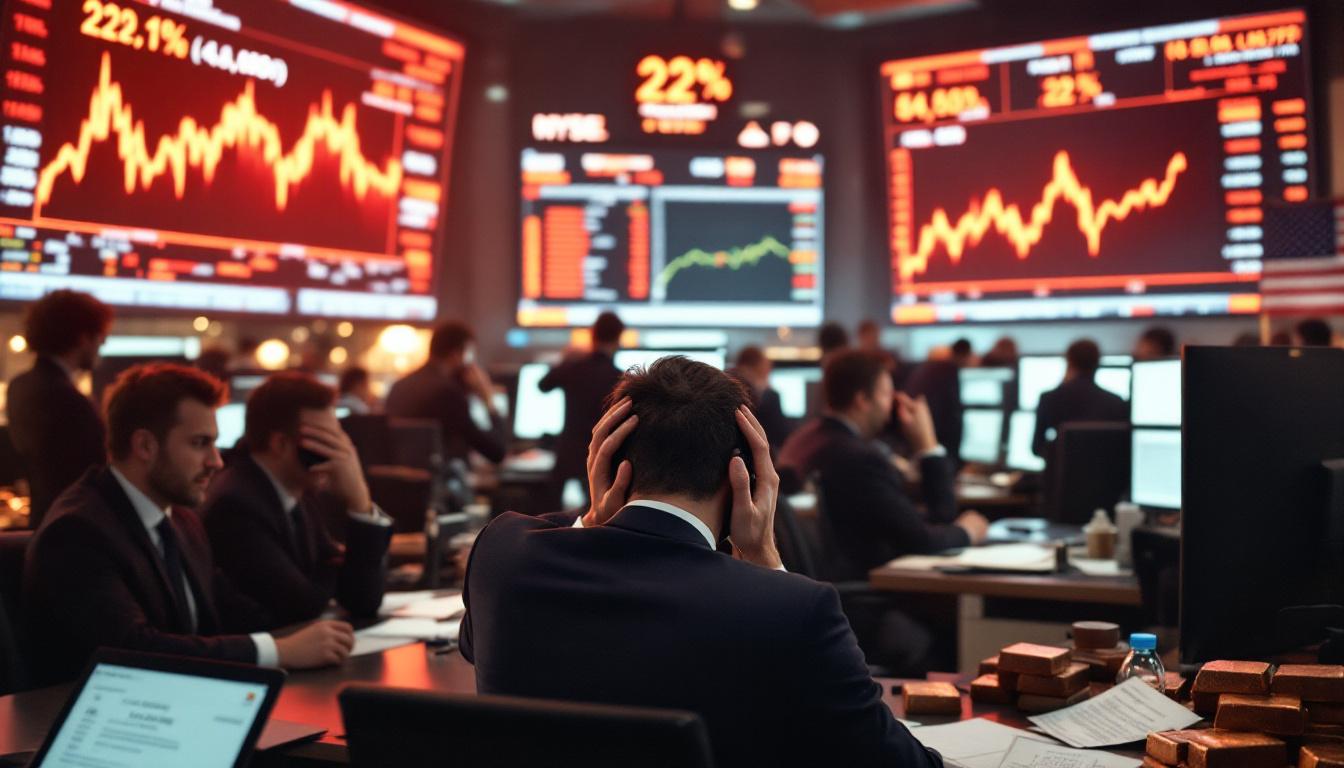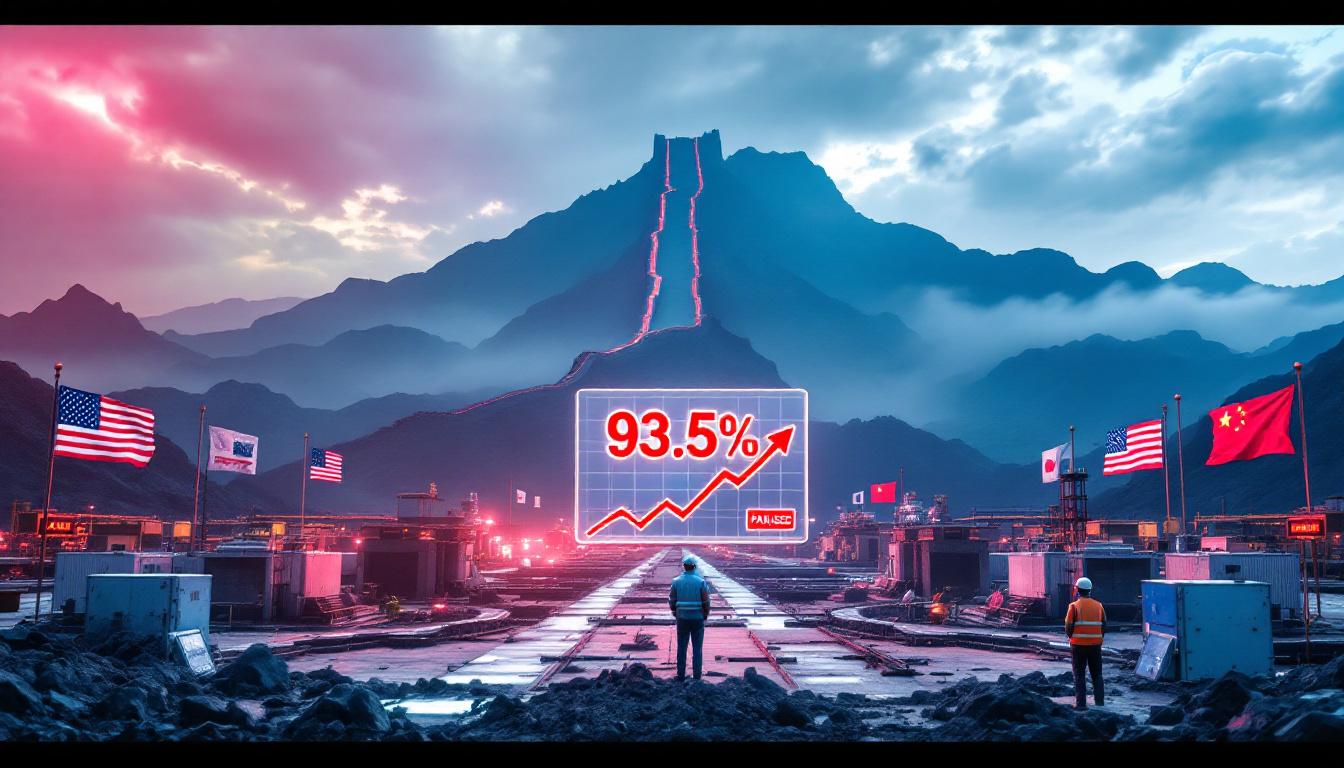What Is Driving the Global Critical Minerals Race in 2025?
The global competition for critical minerals has reached unprecedented levels in 2025, with major powers implementing aggressive strategies to secure supply chains essential for clean energy technologies, defense systems, and advanced electronics. This intensifying race is characterized by government interventions, strategic partnerships, and growing geopolitical tensions as nations vie for control of these increasingly vital resources.
The critical minerals race intensifies amid price floors espionage and new alliances, reshaping the strategic importance these materials have assumed in national security and economic planning. Furthermore, several key factors are influencing this landscape: government price support mechanisms, heightened espionage activities targeting mineral technologies, new international alliances, and shifting trade dynamics.
Government Interventions and Price Support Mechanisms
National governments are increasingly intervening in critical minerals markets to stimulate domestic production and reduce dependence on foreign suppliers. In the United States, the administration has implemented a pandemic-style support plan for rare earth elements, establishing price floors to incentivize domestic mining, processing, and magnet manufacturing.
This approach mirrors strategies used during the COVID-19 pandemic to accelerate vaccine development, providing guaranteed minimum prices to reduce investment risk. The policy aims to rapidly build an end-to-end domestic supply chain for these strategic materials, with officials emphasizing the need to move at "Trump Time" – as fast as possible – to address supply vulnerabilities following recent Trump mineral order initiatives.
Companies like MP Materials Corp. (NYSE: MP) have already benefited from these price support mechanisms, with participation from tech giants including Apple, Microsoft, and Corning in White House discussions. The initiative represents a fundamental shift in how the U.S. approaches critical mineral security, treating it as a national priority demanding immediate action.
The Role of Industrial Espionage in the Minerals Race
Intelligence agencies worldwide have reported a surge in espionage targeting critical minerals sectors. Australia's intelligence chief, Mike Burgess, recently warned that foreign spies are "aggressively targeting" rare earth mining operations, advanced materials research, and defense-related mineral technologies.
The economic impact of this espionage is substantial, with Australia alone estimating losses of approximately AUD 12.5 billion (USD 8 billion) annually from stolen technology and trade secrets. Intelligence officials have specifically identified China, Russia, and Iran as persistent actors attempting to acquire classified information related to minerals data and processing technologies.
"The theft of critical mineral technologies represents one of the most significant economic security threats facing Western nations today. These aren't just corporate secrets – they're national security assets." – Mike Burgess, Australian Intelligence Chief
This espionage extends beyond traditional targets, now encompassing geological surveys, processing techniques, and even supply chain logistics. Companies involved in critical minerals are implementing unprecedented security measures, treating technical knowledge as highly classified information requiring protection comparable to military secrets.
How Are New Alliances Reshaping Critical Minerals Supply Chains?
Emerging International Partnerships
The critical minerals landscape is being transformed by new international partnerships designed to counterbalance China's dominance in processing and refining. The United States is actively pursuing alliances with resource-rich nations, including exploratory discussions with the Philippines regarding its untapped rare earth potential.
During recent diplomatic meetings in Kuala Lumpur, U.S. Secretary of State Marco Rubio highlighted the Philippines' mineral "wealth" and stressed the importance of diversifying supply chains away from China. The Philippines potentially holds significant reserves of elements like scandium and neodymium in its nickel-rich soils, with approximately 95% of these resources remaining unexplored.
These emerging partnerships reflect a dramatic shift in how critical minerals figure into diplomatic relations. Countries with previously overlooked mineral resources now find themselves at the center of strategic courtship by major powers, fundamentally altering traditional geopolitical alignments in the Indo-Pacific region.
Unconventional Supply Chain Strategies
In an unprecedented strategic shift, some Western nations are considering controversial approaches to secure critical mineral supplies. U.S. officials have reportedly entertained proposals to access Myanmar's heavy rare earth deposits—minerals currently processed almost exclusively in China.
These informal discussions have explored various options, including potential deals with Myanmar's ruling junta or direct arrangements with rebel groups like the Kachin Independence Army that control mineral-rich territories. While fraught with legal and ethical challenges, these considerations demonstrate the lengths to which nations are willing to go to secure strategic minerals outside China's sphere of influence.
The ethical implications of such arrangements are profound, raising questions about sovereignty, human rights, and international law. Yet the strategic imperative to secure heavy rare earths—essential for precision-guided weapons systems and certain renewable energy technologies—is driving consideration of options that would have been unthinkable just a few years ago.
What's Behind China's Strategic Mineral Export Policies?
Targeted Export Restrictions
China continues to leverage its dominant position in critical minerals processing through strategic export controls. Despite recent diplomatic engagements aimed at easing trade tensions, Chinese rare earth exports to the United States remain significantly restricted—approximately 50% below normal levels.
Recent data shows that June shipments to the U.S. (353 tonnes) remained 52% lower than the previous year, even as exports to Europe and Asia rebounded. This sustained export squeeze represents a calculated bargaining strategy amid broader trade disputes and technology competition.
The selective nature of China's export policies—maintaining flows to Europe while restricting U.S. access—demonstrates a sophisticated approach to using critical minerals as leverage in international relations. This strategy allows China to maintain market share in friendly regions while applying targeted pressure on strategic competitors.
The Impact on Global Supply Chains
China's export policies have created significant disruptions in global supply chains for high-tech manufacturing. The spring 2025 export squeeze caused some non-Chinese automakers to temporarily halt production due to magnet shortages, highlighting the vulnerability of industries dependent on these materials.
This volatility in export flows—with China controlling over 90% of global rare earth magnet supply—underscores the strategic vulnerability that Western nations are urgently trying to address through domestic production initiatives and international partnerships focusing on energy security in minerals.
"We're seeing the weaponisation of critical mineral supply chains in real time. China's export policies are creating a two-tier global market – those with access and those without." – Industry analyst quoted in The Telegraph
The resulting supply chain adaptations have been costly and complex, with companies implementing redundancy measures, increasing inventory holdings, and accelerating investments in alternative technologies—all of which increase costs and potentially slow the clean energy transition.
How Are Trade Policies Affecting Critical Minerals Markets?
Copper Tariffs and Market Volatility
Recent trade actions have created significant volatility in critical minerals markets. The U.S. implementation of a 50% tariff on imported copper products triggered dramatic price swings in the copper market. Initially, fears that the tariff would cover all copper imports sparked panic buying and price spikes in early July.
However, once clarified that raw forms like concentrate, cathodes, and scrap were exempt, the market reversed dramatically. Copper futures plunged nearly 20% in a single day—the steepest drop since at least the 1980s—as the stockpiling frenzy unwound and U.S. copper prices realigned with global levels as analysts revised their copper price insights.
The immediate market impact was severe, with mining stocks suffering substantial losses. Freeport-McMoRan Inc. (NYSE: FCX) shares fell 9.5%, while Ivanhoe Electric Ltd. (TSX: IVN | OTCQX: IVPAF) dropped 17% as investors reassessed the implications of the policy clarification.
Winners and Losers in the New Trade Landscape
The copper tariff situation has created a complex landscape of winners and losers. American manufacturers of copper-intensive goods stand to benefit from higher prices on imported components, potentially giving locally made products a competitive edge. However, U.S. copper miners and smelters gained little advantage, as the tariff specifically excluded the raw copper they produce.
This policy approach has effectively favoured South American copper suppliers who can still ship refined cathodes tariff-free to the U.S. market. Without complementary measures to streamline mine permitting or expand domestic smelting capacity, critics argue the tariffs impact investment decisions without offering a sustainable path forward for U.S. supply security.
The copper tariff example illustrates a broader challenge in critical mineral policy: the difficulty of designing interventions that simultaneously strengthen domestic production, maintain affordable inputs for manufacturers, and avoid unintended consequences in global markets.
How Are Tech Companies Responding to Critical Minerals Challenges?
Tesla's Strategic Supply Chain Realignment
Leading technology companies are recalibrating their supply chains to reduce dependence on China for critical materials. Tesla has made significant moves in this direction, signing a $4.3 billion agreement with South Korea's LG Energy Solution for lithium iron phosphate (LFP) batteries to be manufactured in Michigan.
These batteries, destined for Tesla's energy storage systems, will be supplied from 2027 through 2030, with an option to extend until 2037. By sourcing from LG's U.S. plant, Tesla avoids the substantial tariffs it currently pays on Chinese-made LFP cells, which have been a significant financial burden on its battery business.
This move is particularly strategic as Tesla's energy division has grown to approximately 10% of its revenue. The company's Powerwall and Megapack products rely heavily on LFP chemistry, which uses iron and phosphate instead of more expensive nickel and cobalt. The agreement with LG secures a non-Chinese supply of these critical components as Tesla's energy business continues to expand.
Semiconductor Supply Chain Security
Tesla has also taken steps to secure its semiconductor supply chain, announcing a $16.5 billion deal with Samsung Electronics to fabricate Tesla's next-generation automotive AI chips in the United States. Samsung will dedicate part of its new Texas semiconductor facility to produce Tesla's custom AI processors around 2027-2028.
This partnership benefits both companies—providing Tesla with a secure, non-Chinese source for critical components while helping Samsung fill capacity at its Texas fabrication plant. The deal exemplifies the broader trend of "friendshoring" in tech supply chains, with companies prioritising production in allied nations rather than relying on potentially vulnerable global networks.
The scale of these investments reflects the growing recognition among technology companies that critical mineral supply chains are now a core strategic issue. Companies are increasingly willing to pay premiums for security of supply, driving fundamental shifts in how and where critical minerals are sourced and processed.
What's Happening in the Lithium Market?
Market Recovery and Chinese Influence
The lithium market has shown signs of recovery after a prolonged slump, largely due to China's influence over both supply and demand dynamics. Lithium carbonate prices in China had declined approximately 90% from late 2022 highs, bottoming out around $8,500 per ton in June 2025. However, prices have rebounded roughly 20% to about $10,300 per ton over the past month.
This recovery has been driven by two primary factors: surging electric vehicle sales in China (exceeding 1 million EVs sold monthly in June, representing 53% market penetration) and strategic production cutbacks by Chinese authorities. Approximately 5% of global lithium supply is currently offline due to environmental checks and export restrictions implemented by China.
The lithium market illustrates China's ability to influence critical mineral prices through both supply and demand levers. As the world's largest EV market and dominant lithium processor, China can affect global prices through domestic consumption patterns and production adjustments—a level of market control unmatched for most other commodities, with emerging lithium brine insights showing similar trends.
Western Producers' Response
Western lithium producers are adapting to this volatile market environment. Albemarle Corporation, the world's largest lithium producer, reported better-than-expected financial results despite lower prices, crediting steady demand from EV battery manufacturers. The company has implemented cost-cutting measures, including staff reductions and project cancellations, while trimming capital expenditures to generate positive cash flow.
Industry analysts note that while the recent price increase is encouraging, the global lithium oversupply situation hasn't fundamentally changed, and the price recovery could be temporary without more significant production adjustments. China's dominant position in both lithium processing and EV manufacturing continues to give it substantial influence over market dynamics.
"We're seeing a tactical rather than strategic shift in lithium markets. The fundamental oversupply situation remains unchanged, but China's ability to influence short-term prices through policy interventions has never been clearer." – Market analyst quoted in Forbes
Western producers face the challenge of balancing production cutbacks to support prices while maintaining market share and operational efficiency. This balancing act is further complicated by government incentives to expand domestic production capacity, creating potentially conflicting market signals.
How Are Resource-Rich Nations Protecting Their Mineral Wealth?
Brazil's Resource Nationalism
Resource-rich nations are increasingly asserting control over their critical mineral deposits. Brazil has launched a comprehensive plan to protect its strategic minerals from foreign dominance, establishing a new commission to map and oversee deposits of lithium, rare earths, cobalt, nickel, and other critical materials.
President Lula da Silva has emphasized that these resources "belong to the Brazilian people" and will not be used as bargaining chips in international trade negotiations. Under Brazil's emerging policy framework, companies mining critical minerals must be licensed and can only sell their output through government channels, giving the state greater control over who extracts these resources and who purchases them.
Brazil's approach represents a sophisticated form of resource nationalism that goes beyond traditional methods like export taxes or ownership requirements. By creating centralised marketing channels, Brazil aims to maximise the strategic value of its mineral wealth while maintaining flexibility in international partnerships—a model that other resource-rich nations are watching closely.
Strategic Export Relationships
Brazil's approach to critical minerals is evolving in response to shifting global trade dynamics. The country has seen its rare earth shipments to China triple in the first half of 2025, already exceeding the full-year 2024 total. Almost all of Brazil's rare earth output now flows to China, which has been investing heavily in Brazil's mining sector and infrastructure.
As U.S.-Brazil relations have cooled amid new tariffs and trade investigations, China has stepped in to deepen economic ties. This realignment is reflected in trade flows, with Chinese state firms forging deals across Brazilian technology, energy, and transportation sectors. The surge in rare earth exports suggests China is diversifying its sources of critical minerals, partly to hedge against tensions with Western nations.
What makes Brazil's situation particularly significant is the scale of its untapped potential. Only about 30% of Brazil's territory has been thoroughly explored for minerals, yet the mining sector already accounts for nearly 80% of Brazil's trade surplus in early 2025. The country holds the world's second-largest rare earth reserves but produces only a fraction of China's output—suggesting enormous potential for increased production under its new strategic framework.
What Future Developments Are Shaping the Critical Minerals Landscape?
Emerging Energy Technologies
The critical minerals race intensifies amid price floors espionage and new alliances, which is being influenced by breakthrough energy technologies that could reshape demand patterns. In central Washington state, startup Helion Energy has begun construction on what it hopes will be the world's first commercial fusion power plant, aimed at supplying Microsoft by 2028.
The planned 50-megawatt reactor, named "Orion," will use an inertial-electrostatic fusion approach. While fusion remains experimental and no one has yet achieved net-positive energy from fusion reactions for a sustained period, the project represents a significant bet on next-generation energy technologies that could eventually alter critical mineral demand profiles.
The potential impact of fusion energy on critical mineral markets is profound but uncertain. If successful, fusion could reduce demand for minerals used in conventional renewable energy systems while potentially creating new demand for specialised materials used in fusion reactors. The long-term implications for critical mineral markets depend on the specific technological pathways that emerge in the energy transition.
Climate Policy Reversals and Mineral Demand
Shifting climate policies are creating uncertainty in critical mineral markets. The U.S. Environmental Protection Agency has proposed revoking the legal foundation for regulating greenhouse gas emissions from vehicles, citing updated science and recent court rulings. If finalised, this rollback would eliminate federal CO₂ limits on car and truck tailpipes—potentially altering the trajectory of electric vehicle adoption in the United States.
EPA Administrator Lee Zeldin touted the rollback as "the largest deregulatory move in U.S. history," suggesting it could save approximately $54 billion annually in compliance costs. This policy shift could create a transatlantic divide in automotive regulations, with European manufacturers still subject to strict emissions targets and EV mandates while U.S. manufacturers face fewer federal requirements.
Such divergence would have significant implications for critical mineral demand, potentially creating regional disparities in consumption patterns for battery metals and rare earth magnets. The resulting uncertainty complicates investment decisions for mining companies and processors, who must now consider the possibility of divergent demand trajectories in different markets.
What Does the Critical Minerals Race Mean for Global Security?
The intensifying competition for critical minerals has profound implications for global security and economic relationships. These materials sit at the nexus of economic and national security concerns, with control over their production and processing increasingly viewed as a strategic imperative by major powers.
The critical minerals race intensifies amid price floors espionage and new alliances, representing a fundamental contest for technological leadership, economic resilience, and geopolitical influence in the 21st century. As nations implement increasingly aggressive strategies to secure these resources, the global minerals landscape is being reshaped in ways that will influence international relations for decades to come.
The coming years will likely see continued government interventions, new international partnerships, and technological innovations aimed at reducing vulnerabilities in critical mineral supply chains. Nations and companies
Wondering How to Capitalise on the Next Major Mineral Discovery?
Discovery Alert's proprietary Discovery IQ model instantly identifies significant ASX mineral announcements, providing real-time insights into opportunities within the critical minerals sector that others might miss. Discover why major mineral discoveries can lead to exceptional returns by exploring the dedicated discoveries page and begin your 30-day free trial today.




